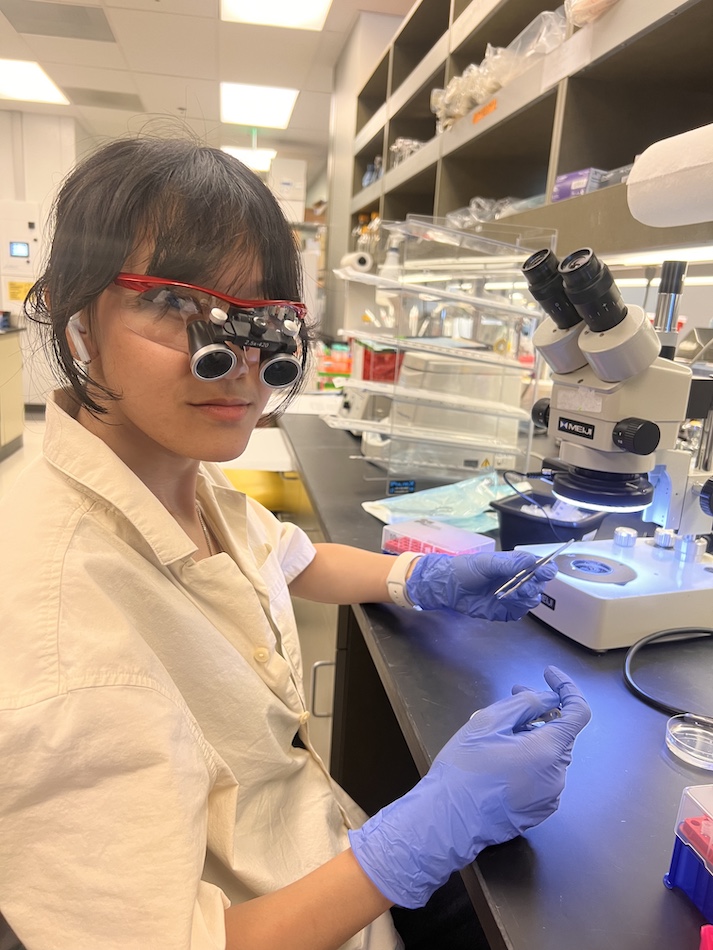Toshiaki Kawakami, M.D., Ph.D., still remembers the adrenaline rush. He recalls the moment his research revealed a fascinating piece of the genome: the nucleotide sequence of immunoglobulin mu chain gene. “When I first saw this beautiful pattern in the genetic sequence, my hands physically trembled,” says Kawakami. “It was exciting and overwhelming. Similar excitement was felt when I found a new gene called Fyn later.”
“Once you feel that kind of excitement in your career, you can’t stop,” he adds. “It’s like a drug.”
It’s been thirty-seven years since Kawakami published his first paper on Fyn. Since then, his laboratory at La Jolla Institute for Immunology (LJI) has uncovered the roles of many other molecules in our immune cells. His findings have helped guide the development of experimental therapies for allergic diseases such as atopic dermatitis.
This year, Kawakami is officially retiring from the field of immunology. He’s taking on the title of LJI Professor Emeritus, which reflects his contributions to immunology—and his place in LJI history.
An early breakthrough
Kawakami began his research career at the University of Tokyo, where he earned his M.D. and later Ph.D. under the guidance of future Nobel Laureate Tasuku Honjo, M.D., Ph.D. In 1984, Kawakami moved to the United States for a postdoctoral research position at the National Institutes of Health’s National Cancer Institute (NCI). There he spearheaded research that eventually led to his discovery of the genes that encode Fyn.
At first, it looked like Fyn expression fueled tumor growth. “I had shown the properties of those genes in tumorigenesis, but those genes should have normal functions, right? Genes shouldn’t exist just to cause tumors,” says Kawakami.
So Kawakami took a closer look at the genes encoding Btk, Lyn and Fyn—and he was right. He and his NIH colleagues showed that the main roles of these enzymes are to help activate immune cells called mast cells and basophils.
This discovery set his research career down a fascinating path. It turns out that Btk, Lyn and Fyn are a kind of enzymes called tyrosine kinases. They are team players—it’s part of a signaling “complex,” or set of proteins, called the FcεRI complex.
Kawakami wanted to study how these kinases interact with other proteins in the complex during immune cell activation. He hoped to put together a full picture of how proteins in the FcεRI complex help the body fight disease.
Becoming a leader in molecular biology
In 1988, Kawakami’s NIH project ended, and his visa requirements meant he had to return to Japan for at least two years. He rejoined Honjo, then at Kyoto University, but he was eager to get back to the United States. “I wanted to be independent,” says Kawakami. “In the Japanese research system, unless you are a full professor, you don’t have control over choosing your projects or almost anything else.”
Just as Kawakami was considering his career path, scientists in La Jolla, CA, were forming a brand new research Institute: La Jolla Institute of Immunology (then called the La Jolla Institute of Allergy and Immunology). The Institute was still in its infancy, but the founders were adamant on supporting researcher independence.
Kawakami joined LJI in 1990. “I was lucky,” says Kawakami. “If the new institute hadn’t started when I looked for a job in this country, none of these steps in my career would have been possible.”
Through the years, Kawakami and his lab members have investigated members of the FcεRI signaling pathway to figure out which proteins are interacting with each other. This is very basic but very important molecular biology. Each protein in the FcεRI complex is a critical cog in the machine—a vital connection in a lively cellular circuit. (In fact, you can view a diagram of this circuit in a 2008 Nature Immunology paper)
By putting together a full view of the FcεRI complex, Kawakami has shown how mast cells and basophils interact with a class of antibody molecules called immunoglobulin (IgE).
His team found that when IgE binds a receptor on the cell surface, this binding sends a signal through Btk, Lyn, Fyn, Syk and other FcεRI complex members to launch a chain reaction inside the cell. As the cell jumps into action, numerous players such as PKC and Ras prompts the cell to release molecules involved in allergic reactions, including a group of proteins called cytokines.
Cytokines are signaling molecules that immune cells use to “talk” to each other. Cytokines are meant to help immune cells—including mast cells and basophils—fight viruses, bacteria, parasites, and even cancer and tumor cells. Indeed, Kawakami’s research has helped reveal signaling pathways that work to suppress tumor growth.
But cytokines can also be the bad guys.
Helping patients with allergies
In people with allergies, IgE can mistakenly see certain food molecules, pollens, etc., as threats. IgE then activates mast cells and basophils through the FcεRI signaling pathway. The immune cells then flood the body with histamine and other molecules, which damage healthy cells and cause diseases such as asthma and atopic dermatitis.
Kawakami’s laboratory harnessed genetic sequencing tools to study the molecules that drive the very earliest events in an allergic reaction. His research revealed that scientists can block mast cell activation by using molecules called Btk inhibitors.
In fact, Kawakami and his colleagues have shown that Btk inhibitors can block allergic reactions in mouse models of asthma and other allergies. He’s very curious to see how the next generation of scientists will advance this research.
“We have drugs for asthma and atopic dermatitis, but these don’t work for all patients. We need to develop new drugs and maybe look at how to combine different drugs for different patients,” says Kawakami. “There are new tools in the field now, so this is the perfect time to do that kind of research.”
A legacy in immunology
Understanding the FcεRI signaling puzzle is a step toward understanding our own, basic biology. It was Kawakami, his colleagues, and his trainees, who put much of this puzzle together.
“When I entered this field, basically nothing was known,” says Kawakami. “None of these molecules were known to be involved.”
Of course, Kawakami shares credit with his wife and closest research partner: LJI Senior Staff Scientist Yuko Kawakami, M.D, Ph.D. “We found each other in the same classroom at the University of Tokyo, and it’s been wonderful,” says Kawakami. “I know of similar cases with a husband and wife research team, and I think it’s a great combination. Without her, I couldn’t do much.”
The couple is now making plans for a retirement that includes plenty of travel—and plenty of sushi, says Kawakami.
“One thing my wife and I are planning to do is to go back to Japan at least twice a year,” he says. “Japan is divided into 47 prefectures, and I’ve counted up the number we haven’t been to yet. We want to visit different prefectures on each of our trips and taste the local foods.”


